- Events & Programs Home
- Calendar
- Accessibility
- Adults
-
Families & Teens
- Families & Teens Home
- 10x10 Teen Art Expo
- Art on the Rise
- Art Together: Art Making for Families with Children Ages 3–5
- Boy Scouts / Girl Scouts
- Members-Only CAM Kids Day
- CAM Kids Day
- Family Storytime and Gallery Walk
- Family Studio: Art Making for Families with Children Ages 6–12
- Games in the Galleries
- Members-Only Baby Tours
- Public Baby Tours
- REC Reads
- Rosenthal Education Center (REC)
- See Play Learn Kits
- Summer Camp
- Teachers
- Community Outreach
- Fundraisers
- Plan Your Own Event

- Events & Programs Home
- Calendar
- Accessibility
- Adults
-
Families & Teens
- Families & Teens Home
- 10x10 Teen Art Expo
- Art on the Rise
- Art Together: Art Making for Families with Children Ages 3–5
- Boy Scouts / Girl Scouts
- Members-Only CAM Kids Day
- CAM Kids Day
- Family Storytime and Gallery Walk
- Family Studio: Art Making for Families with Children Ages 6–12
- Games in the Galleries
- Members-Only Baby Tours
- Public Baby Tours
- REC Reads
- Rosenthal Education Center (REC)
- See Play Learn Kits
- Summer Camp
- Teachers
- Community Outreach
- Fundraisers
- Plan Your Own Event
Blog
Blog
- Home
- Plan Your Visit
- Art
-
Events & Programs
- Events & Programs Home
- Calendar
- Accessibility
- Adults
-
Families & Teens
- Families & Teens Home
- 10x10 Teen Art Expo
- Art on the Rise
- Art Together: Art Making for Families with Children Ages 3–5
- Boy Scouts / Girl Scouts
- Members-Only CAM Kids Day
- CAM Kids Day
- Family Storytime and Gallery Walk
- Family Studio: Art Making for Families with Children Ages 6–12
- Games in the Galleries
- Members-Only Baby Tours
- Public Baby Tours
- REC Reads
- Rosenthal Education Center (REC)
- See Play Learn Kits
- Summer Camp
- Teachers
- Community Outreach
- Fundraisers
- Plan Your Own Event
- Give & Join
- About
- Tickets
- Calendar
- Exhibitions
- Collections
- Blog
- Shop
Farm to Table: A Mystery
by Bruce Petrie, President, Board of Directors
8/1/2025
Farm to Table: Food and Identity in the Age of Impressionism , CAMConservation , Cezanne
Who doesn’t like an honest-to-goodness art mystery story?
You can find one in the Farm to Table exhibition at the Cincinnati Art Museum: a painting—or, as we’ll see, paintings—in CAM’s permanent collection by Paul Cézanne (1839–1906), Still Life with Bread and Eggs painted in 1865.
The story begins in 2022 when former Chief Conservator Serena Urry discovered that Cézanne’s still life was painted over an earlier painting. X-ray scanning revealed a portrait, detected by the white lead paint underneath the still life.
Adding mystery to mystery: Whose portrait is this? Is it a self-portrait of Cézanne?
Here is where science and art do a tag team, neither able to solve the mystery without help from the other. The science of radiology and chemistry have helped reveal the portrait, but the art of portraiture would need to investigate some artful clues, looking into images and doing some quick sketches to reveal compositions.
Image One. For starters, here’s Cézanne’s Still Life with Bread and Eggs:
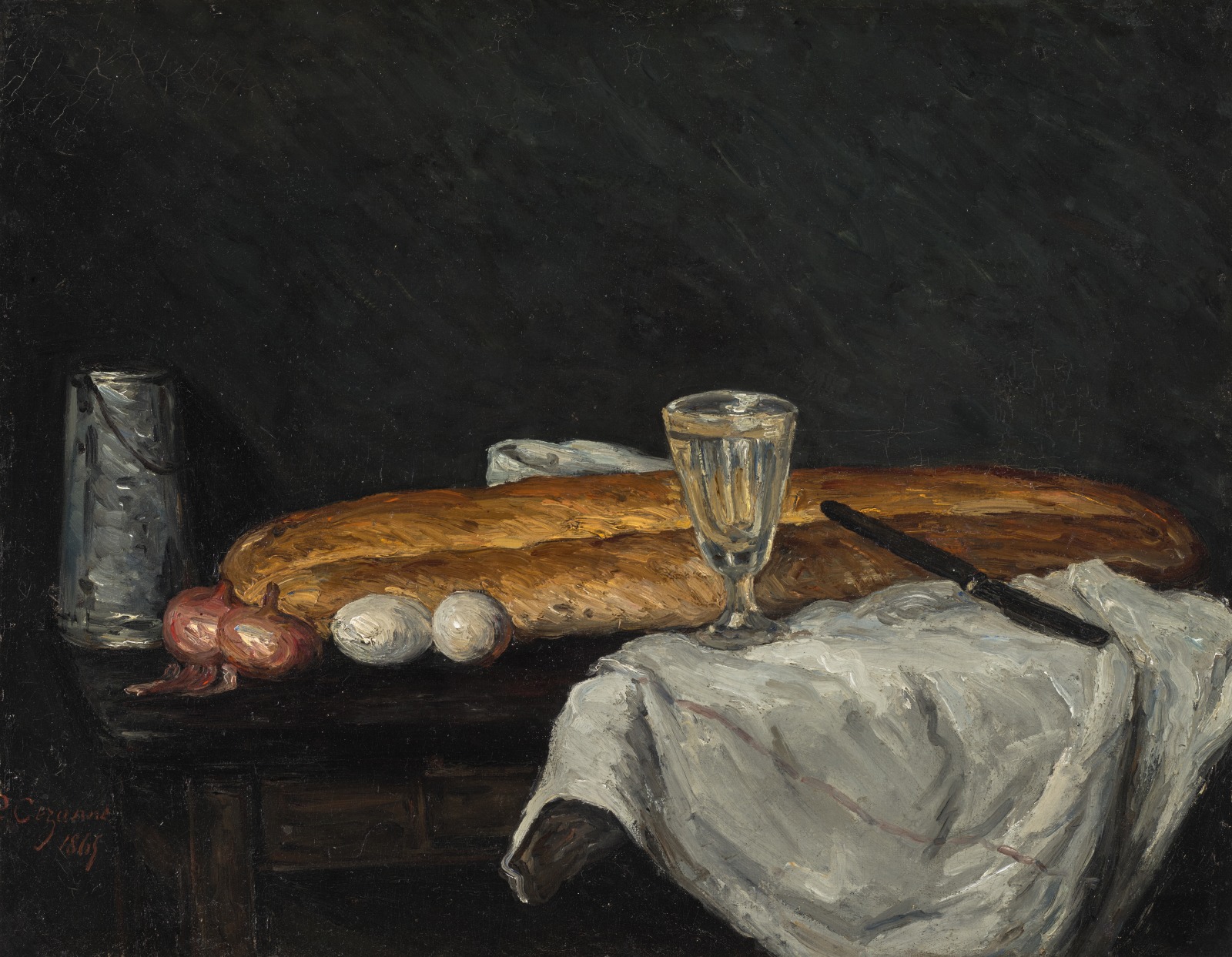
Image Two: After painting the portrait vertically on the rectangular canvas, Cézanne turned the canvas 90 degrees to paint his horizontal still life. Here’s a sketch showing the still life composition in vertical:
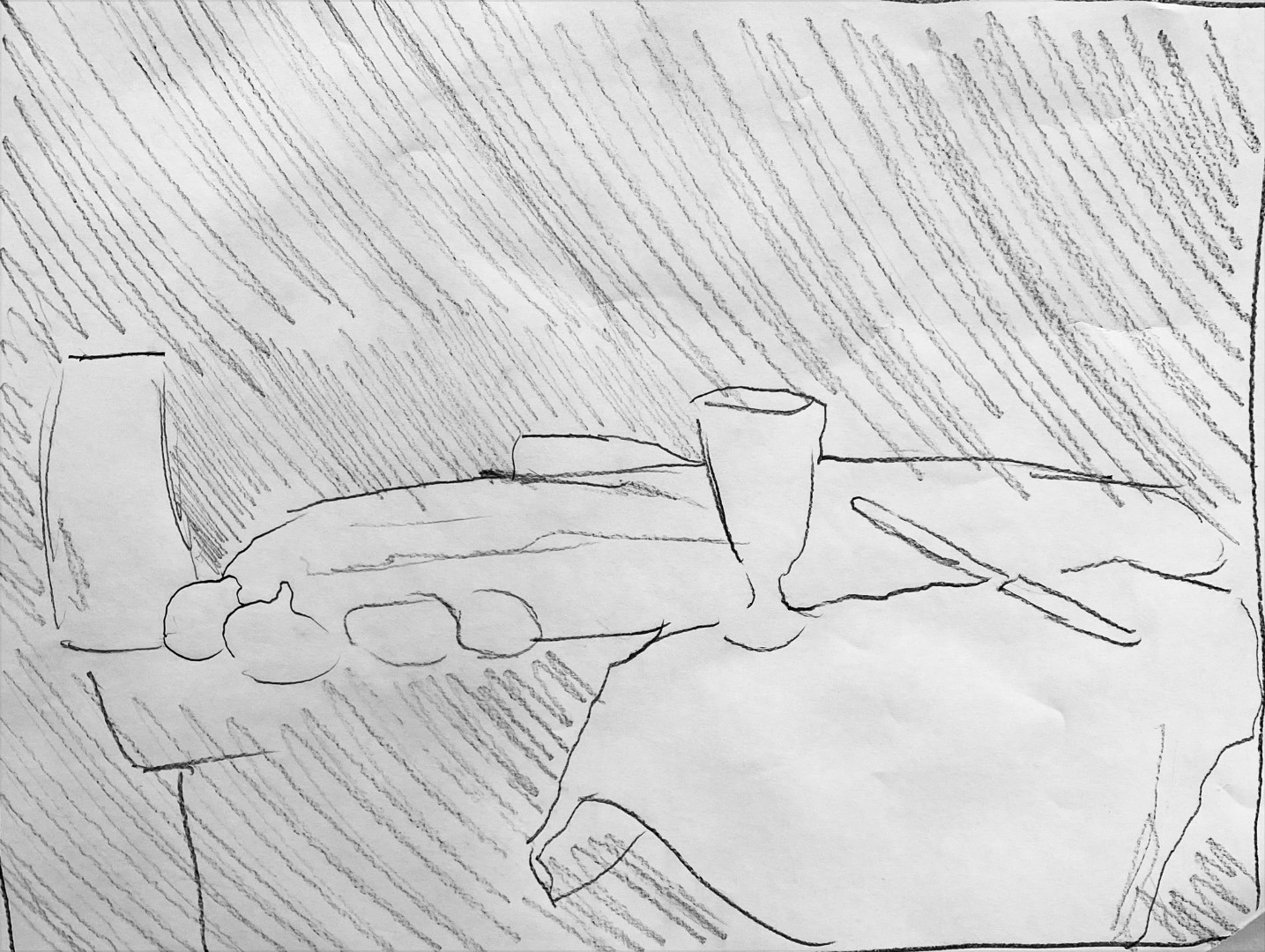
Image Three: Now let’s look at the X-ray image underneath. The white is lead paint both in the lighter tones of the portrait and the still life.
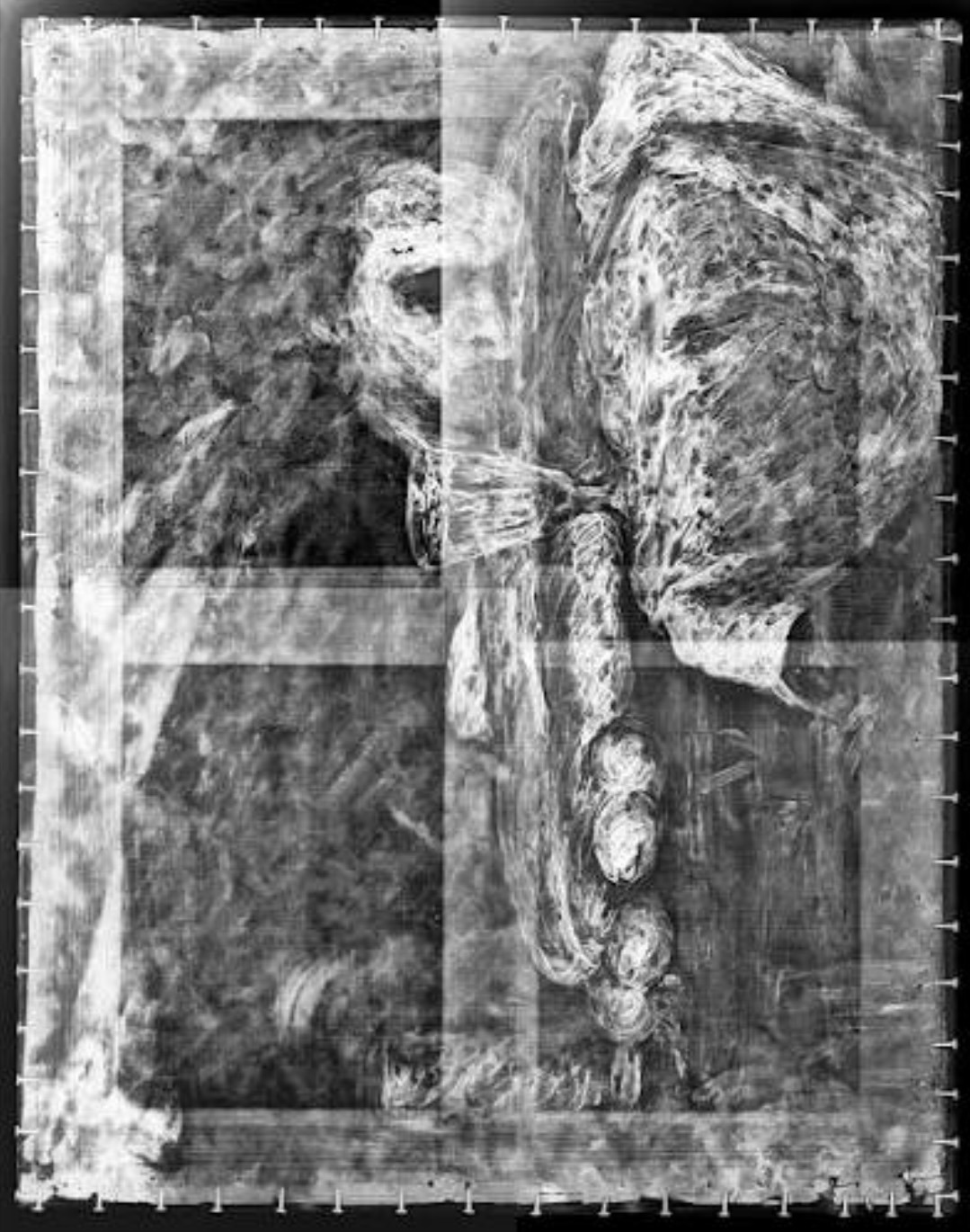
Image Four: To help see the portrait, here is my sketch, which is necessarily inexact due to the X-ray.
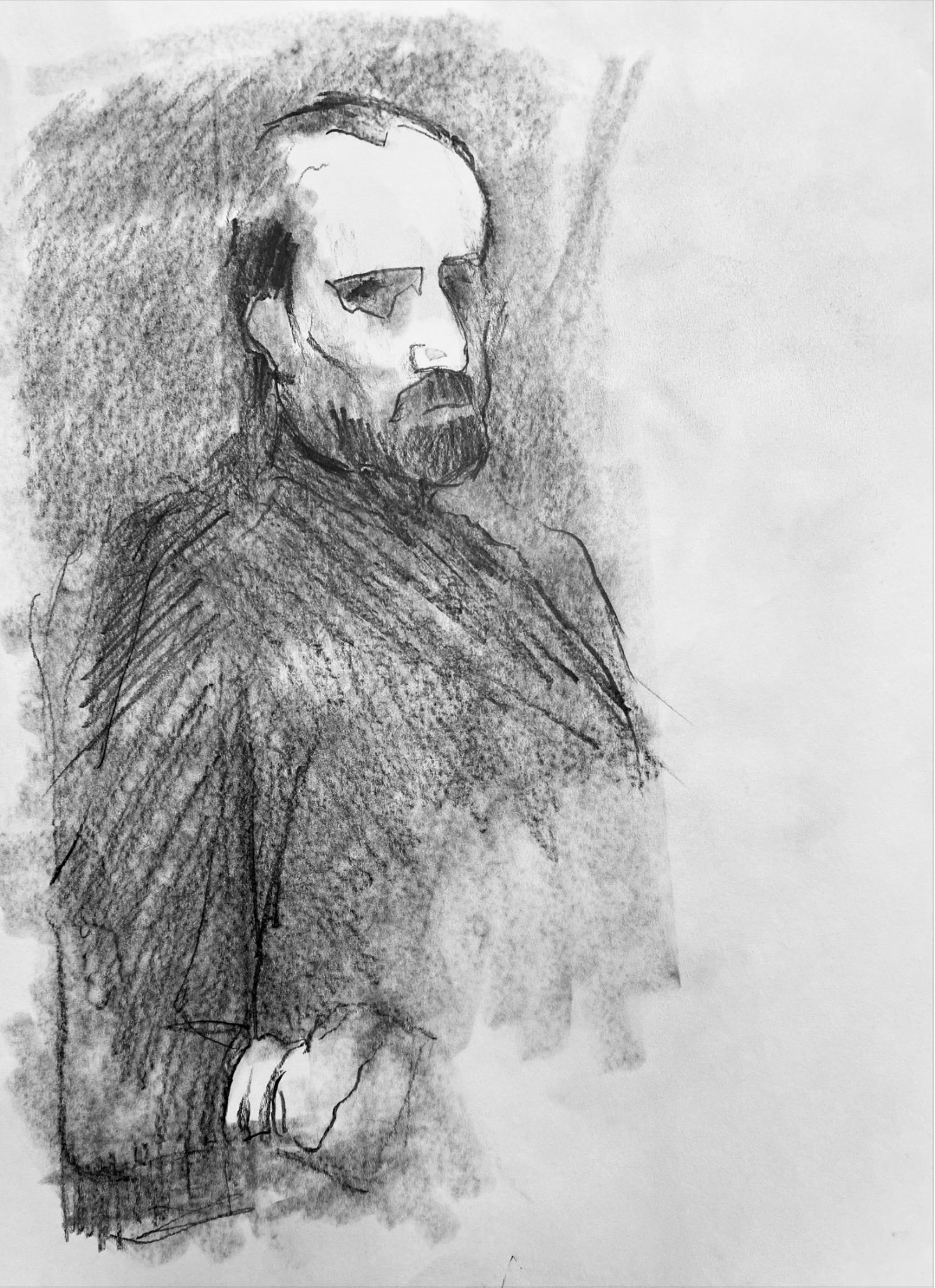
Let’s now turn to the clues that may point us in the right direction even if we aren’t 100% like Sherlock Holmes.
Clue #1. We know the still life is a Cézanne; and we also know that doing an oil painting over the top of another is today, and was in the nineteenth century, a common practice. Born in 1839, Cézanne was 26 and in his early career stage in 1865, a struggling artist. Painters then and now don’t waste a good, expensive canvas. Moreover, painting oil pigments over the top of dried pigments below has aesthetic purpose, adding depth to texture and color.
Clue #2: Cézanne had a very prominent, bald forehead, hair tufts above ears, over the collar in back, a full beard, an aquiline nose, a serious visage, and dark suited. The Xray image, while imprecise, is consistent with these features, especially the bald forehead which Cézanne used lead white to paint.
To compare features, here’s a sketch I drew of another Cézanne self-portrait which he did when he was older.
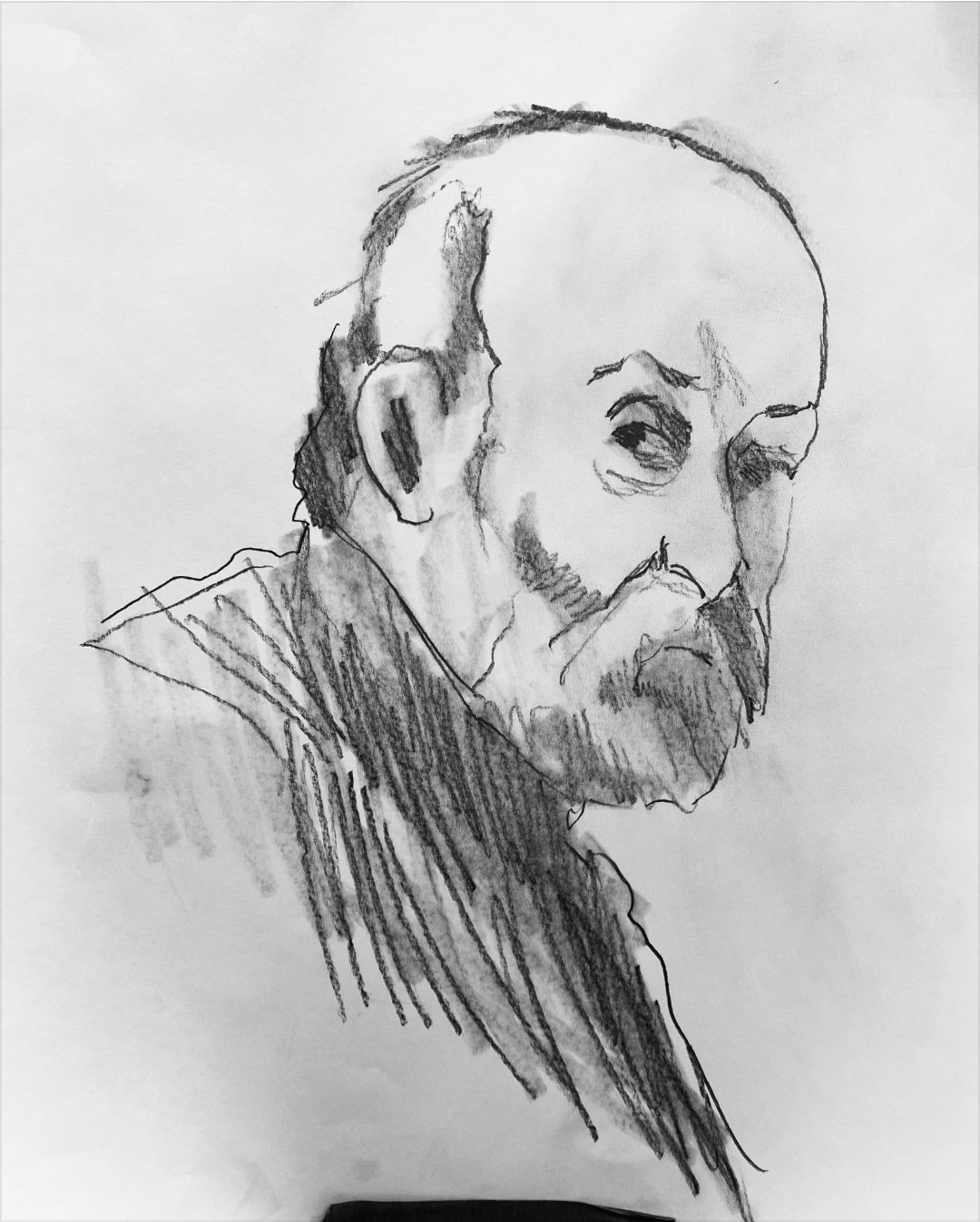
Clue #3: Self-portraits from life are painted while positioning the easel in front of a large mirror. The self-portrait is often a three-quarter’s viewpoint, since the painter needs to look at both the mirror and canvas. This is the exact positioning of the Cézanne portrait. I believe he is doing a mirror self-portrait, showing himself in the act of painting.
Clue #4: An essential tool for portrait painting is the maulstick, holding it in one hand like a bridge, so you can rest your hand and brush on the canvass without getting into the wet paint. Looking carefully at the base of the X-ray, there may be a white sleeve cuff showing along with a hand holding a maulstick. Note also that the top of the stick appears to align with the still life’s knife turned vertically.
Clue #5: Self-portraiture was a common, convenient, and inexpensive practice in portrait drawing and painting because a model wasn’t required. Also, trial and error learning could proceed without offending a client or blowing a commission. At age 26, Cézanne was in his early learning phase and might have seen the self-portrait as more practice than perfect, an expendable workout, a good canvas for a still life to sell.
If we were standing in that studio in 1865 when Cézanne started to paint over his portrait, we’d yell, “Stop!’’ Today, we’re thankful for the Cincinnati Art Museum’s three “c’s” of curatorship, conservation, and curiosity. Cézanne’s double painting still fascinates. After all, great art is no stranger to unsolved mystery.
See you at CAM!
Related Blog Posts


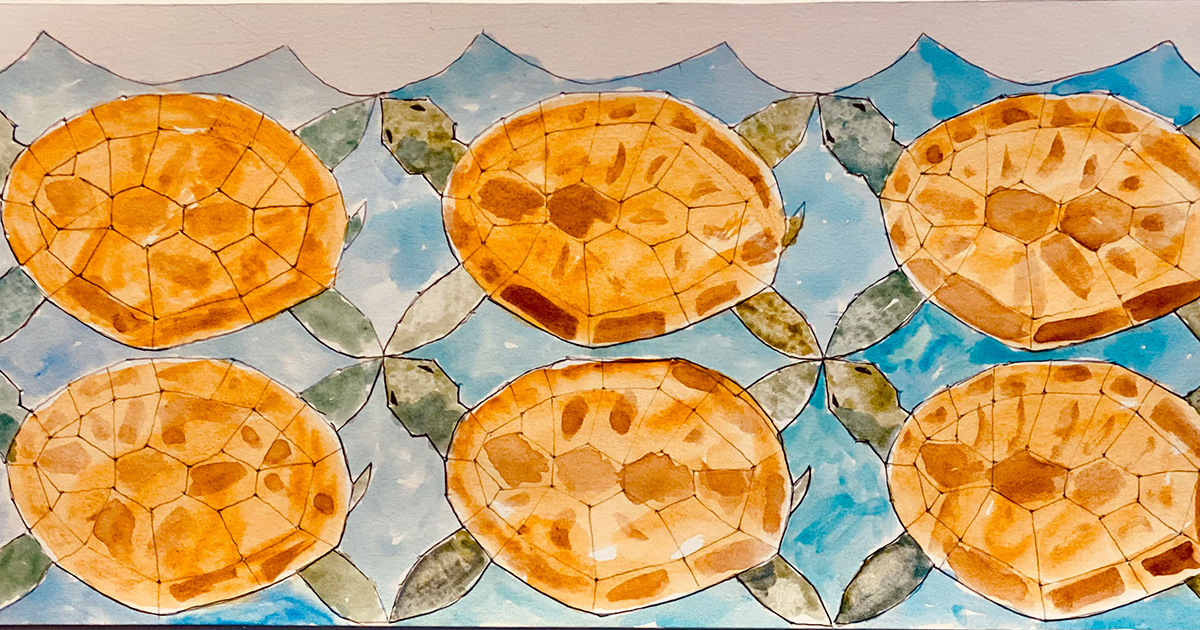
Cincinnati, OH 45202
Toll Free: 1 (877) 472-4226
Museum Hours
Museum Shop
Terrace Café
Library
The Cincinnati Art Museum is supported by the generosity of tens of thousands of contributors to the ArtsWave Community Campaign, the region's primary source for arts funding.

Free general admission to the Cincinnati Art Museum is made possible by a gift from the Rosenthal Family Foundation. Exhibition pricing may vary. Parking at the Cincinnati Art Museum is free.
Generous support for our extended Thursday hours is provided by Art Bridges Foundation’s Access for All program.

General operating support provided by:



